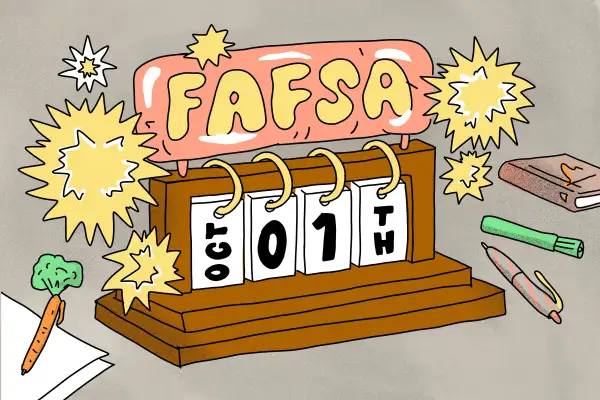The FAFSA Opens Today. What Families Need to Know About Applying for Federal Student Aid

Oct. 1 marks the start of the annual college financial aid application cycle, as families can start filling out the Free Application for Federal Student Aid (FAFSA) for next year.
The FAFSA is the form that the U.S. Department of Education uses to determine your eligibility for federal student loans, grants and work-study funds. Roughly 10 million students a year get some kind of money, including a combined $30 billion in grants, through the form, according to Federal Student Aid, an office within the Education Department.
College students have to fill out the FAFSA every year that they're enrolled to get federal aid, and for students who are considered dependents (that's most undergraduate students under 24 years old), they'll have to submit both their financial information and their parents' information.
This year, you'll be using 2020 tax information to apply for aid for the school year that starts in fall 2022. Most people who filed tax returns can use what's called the IRS Data Retrieval Tool to automatically import tax information into the FAFSA form, which should make the process quicker. (Read Money's guide on how to fill out the FAFSA for a step-by-step breakdown.)
You may have heard about some big changes coming to the FAFSA, including eliminating many of the questions on the form. Those changes are still in the pipeline, so students won't see most of them for a couple more years. This year's form and application process will look much like it has in years past. Here's what to know.
Fill out the FAFSA as soon as you can
You do not need to rush to file the FAFSA today, or even in the next week. But you should plan to complete it this fall, and depending on the state you live in, possibly this month.
Aside from the federal government, states, colleges and some private scholarship foundations also require the FAFSA to award money for college. And while you can access low-cost federal loans and Pell Grants throughout the academic year, at least 10 states award financial aid on a first-come, first-served basis until the money runs out. Other states have deadlines to apply for state aid as early as January 2022, and most colleges have limited financial aid budgets. See state FAFSA deadlines here.
"You want to make sure you’re putting yourself in a position to be considered for the maximum amount of aid you’re eligible for," says Karen McCarthy, director of policy analysis at the National Association of Student Financial Aid Administrators.
Keep in mind that after your FAFSA is processed, you'll get your Expected Family Contribution, an indicator that colleges use to determine financial aid — and an estimate of how much federal aid you may be eligible for. But you won't get a full financial aid offer. That comes later, usually after you've been accepted at a college.
You'll still see questions about the selective service and drug convictions
In the future, students filling out the FAFSA will see a shorter, more straightforward application form, thanks to legislation passed by Congress at the end of 2020. The changes include eliminating several questions on the form, as well as the term Expected Family Contribution, which confuses families since it's not actually what the government is saying you'll pay. The formula is also changing to expand the number of students who are eligible for federal grants and to eliminate a popular break that helps families with multiple children in colleges.
Most of the these, which McCarthy described as "major, major changes," were supposed to take effect ahead of the 2023-24 school year, but they've been pushed back another year.
There are, though, two smaller changes that have already happened: First, male applicants will no longer have to register for the Selective Service System (until now, signing up for the database has been a requirement of accessing federal aid). And second, having a drug conviction while receiving student aid no longer affects your eligibility, a move that was cheered by college access groups.
Here's the catch: the federal aid office said the changes weren't adopted with enough time to change the entire FASFA application. So you'll still see questions asking about selective service and drug charges. You should answer both questions, but your answers won't affect your aid.
"It’s a little bit confusing, because the questions are still there," McCarthy says. "But the changes will be implemented on the school's side."
You may have to submit additional financial information after filing the FAFSA
Many families are still dealing with unusual financial situations due to the economic disruption brought on by the pandemic. If your 2020 tax return doesn't reflect your current financial situation, you still have to fill out the FAFSA using that tax return. Afterwards, you'll have to individually contact the colleges you apply to (or the college where you're enrolled) and submit updated information.
Unusual FAFSA applications — say, if there's been big drop in income from one year to the next — could be flagged for an audit process called verification. While the Education Department temporarily relaxed verification this year to avoid overburdening students during the pandemic, it will resume the normal verification process for the 2022-2023 academic year.
If your application is flagged, first, don't assume it means you made a mistake. Applications are often flagged at random. The information you are asked to verify is typically your taxable earnings, household size or income from sources like child support. You'll have to submit additional paperwork to each college you're applying to.
More from Money:
How to Apply for the FAFSA in 9 Easy Steps
